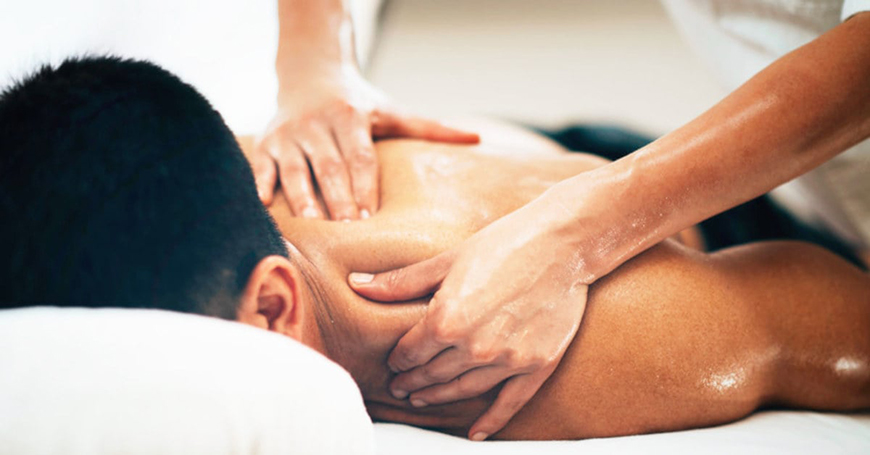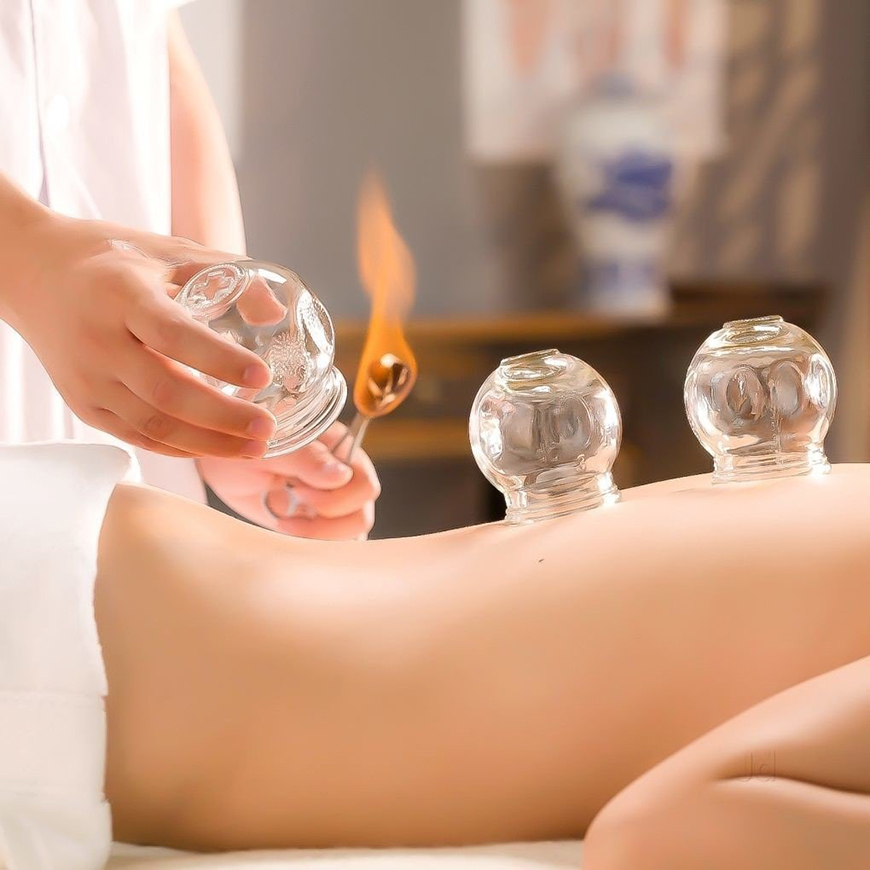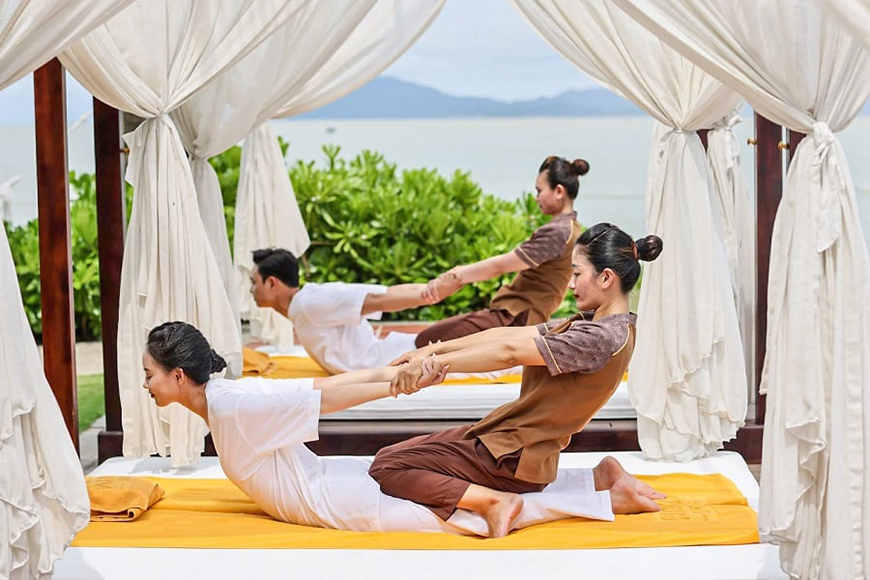Vietnamese massage is much more than a simple relaxation technique; it's an ancient art that combines tradition, philosophy and well-being.
Welcome to the soothing world of Vietnamese massage, an ancient practice that combines relaxation and therapy.

Experiencing a traditional Vietnamese massage can revitalize both your mind and body - Source : Collected
Origins and history
Vietnamese massage has its roots in traditional Vietnamese medicine, itself influenced by Chinese medicine. The practice dates back over 2000 years, when Buddhist monks introduced massage techniques to Vietnam.
Over the centuries, Vietnamese massage has evolved to incorporate unique elements of local culture. It has developed as a form of preventive and curative medicine, used to treat a variety of physical and mental ailments.
Special features of Vietnamese massage
What sets Vietnamese massage apart from other Asian practices is its holistic and gentle approach. Unlike Thai massage, often described as “passive yoga” due to its intense stretching, Vietnamese massage focuses on gentle pressure and fluid movements, often performed with fingers, palms and even elbows...
Among the most common techniques are oil massage, used to relax muscles and improve blood circulation; pressure massage, inspired by Japanese shiatsu, which targets specific points to relieve tension; and foot massage, a popular practice that stimulates reflex zones on the feet, promoting overall relaxation.
Key features of Vietnamese massage include acupressure, where practitioners use their fingers, palms and sometimes even elbows to stimulate specific points on the body, promoting the circulation of vital energy. Friction techniques, with gentle circular movements, are used to improve blood and lymph circulation. The use of local essential oils, such as cinnamon or eucalyptus oil, is common for its therapeutic properties.
The cupping technique, using glass or bamboo cups, is sometimes incorporated to promote detoxification. Finally, particular attention is paid to the feet, considered the mirror of the whole body in traditional Vietnamese medicine.

The massage techniques embody the essence of Vietnam's cultural tapestry - Source : Collected
Massage variations in Vietnam
Vietnamese massage has regional variations, each reflecting the cultural and geographical particularities of its region of origin.
Northern massage (Hanoi and surrounding area)
In the north, around Hanoi, massage is characterized by a more marked Chinese influence, with frequent use of acupressure and slower, more deliberate movements. Hanoi's “massage of the four seasons” incorporates techniques adapted to each season to balance the body.
Central massage (Hué, Da Nang, Hoi An)
In central China, in cities such as Hué, Da Nang and Hoi An, massage is influenced by the royal medicine of the Nguyen dynasty. Local medicinal herbs and more pronounced friction techniques are used. In Hué, the “imperial massage” offers a luxurious experience inspired by court traditions.
Southern massage (Ho Chi Minh City and Mekong Delta)
In the South, in Ho Chi Minh City and in the Mekong Delta, massage adopts a faster, more dynamic rhythm, incorporating reflexology techniques and frequently using coconut and tropical fruit oils. Mekong Herbal Massage” in the delta uses hot herbal sachets for deep detoxification.
Highlands massage (Da Lat, Buon Ma Thuot)
In the highlands around Da Lat and Buon Ma Thuot, massage is influenced by the traditions of ethnic minorities. Local pine and eucalyptus essential oils are used, with an emphasis on relieving muscular pain. Volcanic stone massage” in Da Lat combines traditional massage and heat therapy.
Coastal massage (Nha Trang, Mui Ne)
Finally, on the coast, in Nha Trang and Mui Ne, massage incorporates marine elements such as warm sand and shells, focusing on hydration and sun protection, with deep relaxation techniques. Seaweed massage” in Nha Trang is renowned for its detoxifying and revitalizing properties.
If you get the chance, exploring these regional variants of Vietnamese massage opens a window onto the culture and history of the region you're visiting, adding an extra dimension to your Vietnam travel experience.

You will find a plethora of massage options in Vietnam's big cities - Source : Collected
Benefits and therapeutic effects
Vietnamese massage offers numerous physical and mental health benefits. It relieves muscular tension with its pressure and kneading techniques, reducing pain and promoting flexibility. Blood circulation is improved, bringing more oxygen and nutrients to the cells and promoting the elimination of toxins.
On the mental level, Vietnamese massage reduces stress and anxiety, promoting deep relaxation and better emotional balance. It also stimulates the immune system by improving lymphatic circulation, helping the body to fight infection more effectively.
Sleep quality is often improved by the relaxing effects of massage, which is essential for physical and mental recovery. Headaches and migraines can be relieved thanks to techniques targeting tension points around the head, neck and shoulders.
Finally, certain massage maneuvers, particularly those focusing on the abdomen, can stimulate digestion and help relieve problems such as bloating or constipation.
Anecdotes and curiosities
Vietnamese massage was once considered a sacred ritual, practiced only by monks and healers. Some emperors even had their own dedicated masseurs, considered invaluable health advisors.
An interesting peculiarity is the use of buffalo horn in certain regions of Vietnam. This traditional tool, smooth and rounded, is used to massage specific points on the body, particularly along the spine, bringing deep relaxation and stimulating the internal organs.
Where can you enjoy a Vietnamese massage?
Today, Vietnamese massage is available all over the country, from luxury spas in Hanoi to small street stalls in Ho Chi Minh City. For an authentic experience, don't hesitate to visit traditional massage centers, often run by families for generations.

Cupping is a well-known practice in traditional Asian bodywork - Source : Collected
Mr Linh's advice
If you're tempted by the Vietnamese massage experience during your trip, here are a few tips to ensure an optimal and respectful experience:
To get the most out of the Vietnamese massage experience on your trip, it's important to choose a reputable establishment, communicate your preferences clearly, and respect local customs. Make sure you're well hydrated before and after the massage, and avoid sessions right after a heavy meal or strenuous physical activity.
It's normal to feel a little dizzy or sleepy after a massage. Take time to rest and enjoy the benefits of this unique experience.
Good to know
- Prices vary considerably depending on location. Expect to pay more at high-end spas.
- Tipping is not mandatory, but appreciated. 10-15% of the price is a common standard.
- Sessions generally last between 60 and 90 minutes. Allow plenty of time to enjoy them to the full.
- Vietnamese massage is a respectable therapeutic practice. Any inappropriate behavior is unacceptable.
- If you feel uncomfortable at any time, don't hesitate to report it or to end the session.

Lengthening the body's tissues is a well-established technique used in various Asian massage disciplines - Source : Collected
In conclusion
Vietnamese massage is much more than a simple relaxation technique. It's a journey through Vietnamese history and culture, a unique sensory experience that will leave you relaxed, revitalized and imbued with the age-old wisdom of this beautiful country.
On your next trip to Vietnam, treat yourself to this gift of well-being. Your body and mind will thank you!